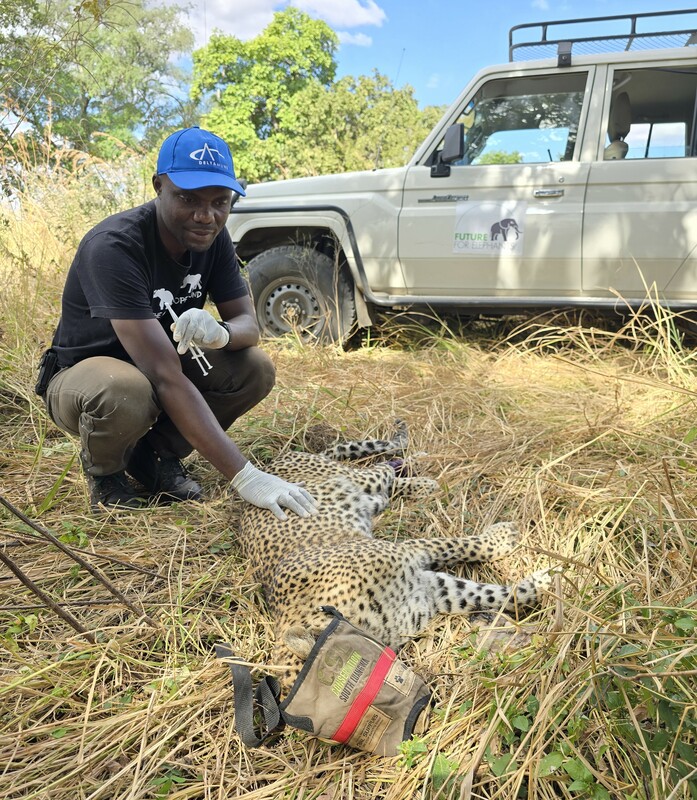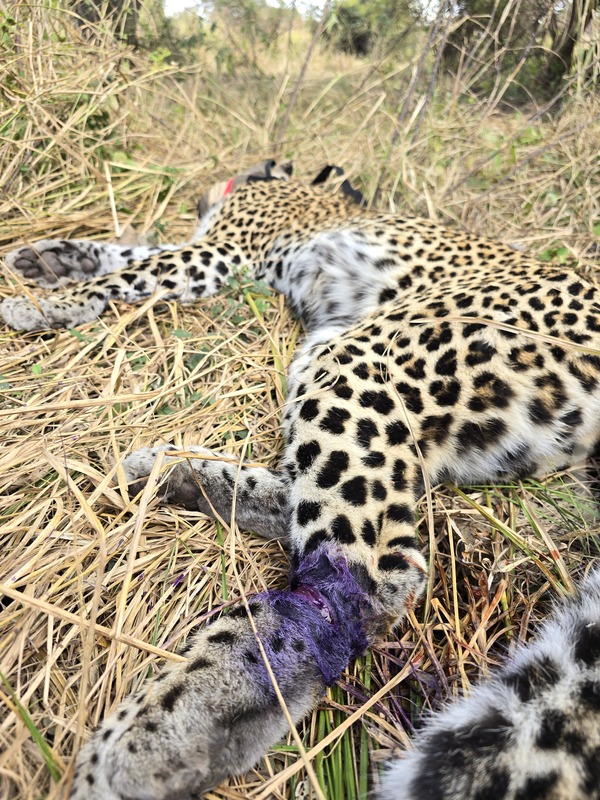
South Luangwa Leopard Rescue, Zambia
In January we completed a transfer of funds to Conservation South Luangwa to support anti-snaring and wildlife rescue operations in the Luangwa Valley.
There are seasonal trends in wildlife rescue activities in South Luangwa. It is usual for these to peak during the cool dry winter months from June to November when vegetation recedes and the bush is most accessible. It is at this time that the funds we donated are absolutely crucial. It means that CSL’s wildlife veterinarian, Dr. Mwamba Sichande, has the necessary resources, from vital veterinary equipment and drugs as well as basic supplies such as fuel for the rescue vehicle, to respond quickly to reports of injured wildlife.
One such call came in this June...
Reports of a female leopard with a snare injury to one of her back legs reached the team. Time was of the essence - the leopard, known as Kamini, had a 2 month old cub.
Leopards are notoriously challenging to dart, but Dr. Sichande and his team managed to immobilize the leopard swiftly and efficiently. The team monitored her condition closely while removing the small wire snare from her leg. They cleaned and treated her wound with antibiotics. Local lodge staff watched over her while she recovered.
At 4am the following morning, the leopard awoke and immediately sought out her cub, who had been hiding safely nearby up a sausage tree.
We are delighted to hear that Kamini has continued to make a full recovery and her cub is well.
With thanks to Nick Riddin/Tafika Camp and CSL for the following images of the rescue operation.
Please note - sensitive content - some of the following images may be distressing.

Close up of the wire snare around the leopard's leg.

Carefully removing the snare.

Cleaning the wound.

This small wire guinea fowl snare. Snares do not discriminate - they trap a wide range of animals from big cats and wild dogs to giraffe and elephant causing immense suffering and a slow and painful death, unless they are found and rescued in time of course, like this female leopard.
Guides, camp staff, rangers and anti-snaring patrols play a crucial role in protecting wildlife from illegal activities - it is a real team effort. Thanks to the staff of Tafika camp for calling this one in.

Administering drugs.

The treated wound.


Dr. Mwamba Sichande
Dr. Mwamba Sichande is a key figure in wildlife conservation efforts in the South Luangwa Valley, Zambia. As the on-site veterinarian for Conservation South Luangwa (CSL) and the Zambian Carnivore Programme (ZCP), who EAE also supports, he plays a crucial role in the rescue and treatment of injured wildlife, particularly those caught in snares. Dr. Sichande's expertise and quick response capabilities have been instrumental in saving numerous animals, including elephants, giraffes, and recently, a snared leopard.
Dr. Sichande's work extends beyond immediate wildlife rescue. He established a veterinary mentorship program in 2014 to support and train the next generation of veterinarians. This programme offers both national and international students hands-on experience in veterinary work under challenging conditions. His mentorship has produced several certified veterinarians, contributing to the broader conservation efforts in the region.
Dr. Sichande's dedication and expertise ensure that CSL can effectively address the critical issues of poaching and wildlife injuries, thereby supporting the long-term conservation of biodiversity in the South Luangwa ecosystem.




